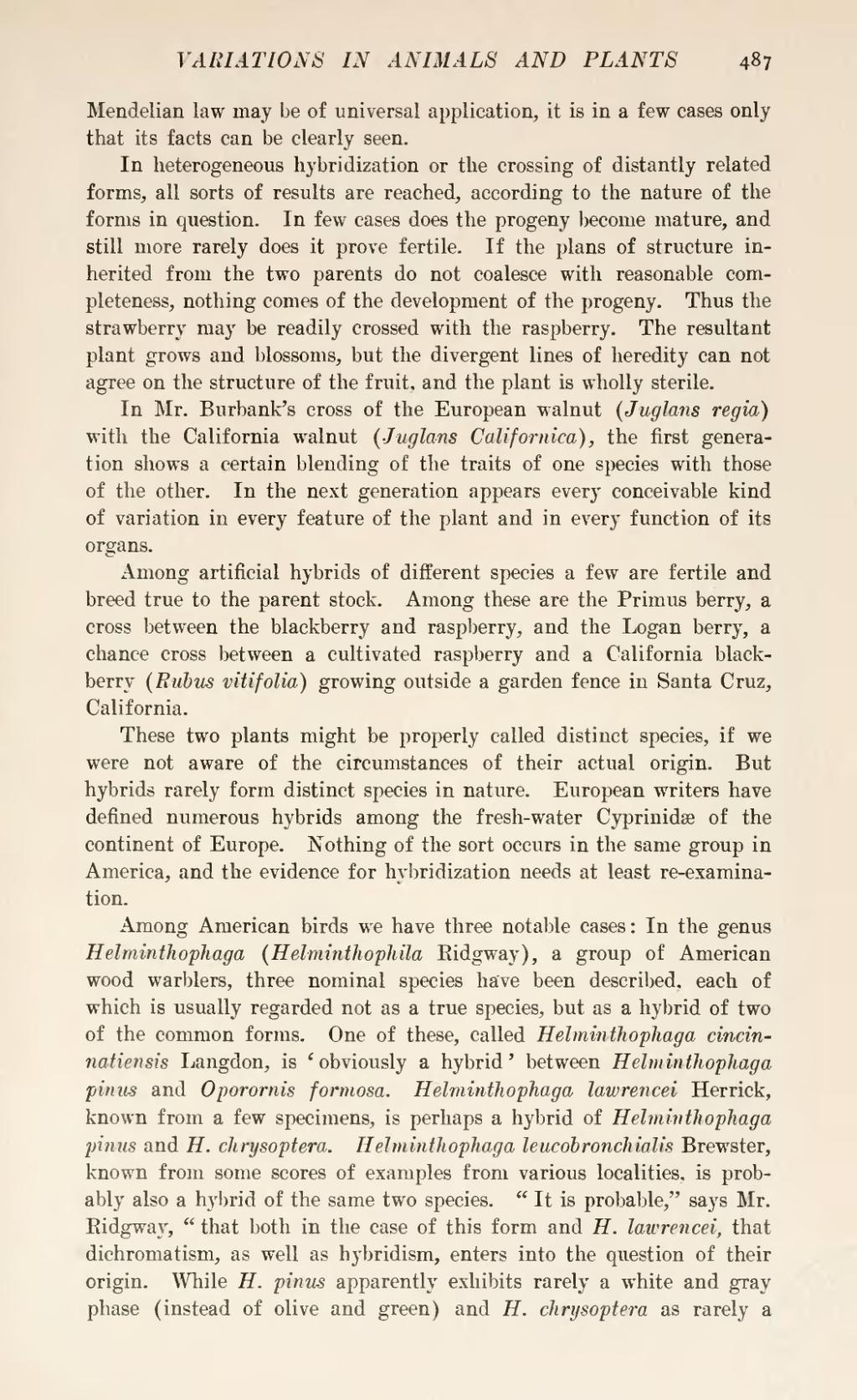Mendelian law may be of universal application, it is in a few cases only that its facts can be clearly seen.
In heterogeneous hybridization or the crossing of distantly related forms, all sorts of results are reached, according to the nature of the forms in question. In few cases does the progeny become mature, and still more rarely does it prove fertile. If the plans of structure inherited from the two parents do not coalesce with reasonable completeness, nothing comes of the development of the progeny. Thus the strawberry may be readily crossed with the raspberry. The resultant plant grows and blossoms, but the divergent lines of heredity can not agree on the structure of the fruit, and the plant is wholly sterile.
In Mr. Burbank's cross of the European walnut (Juglans regia) with the California walnut (Juglans Californica), the first generation shows a certain blending of the traits of one species with those of the other. In the next generation appears every conceivable kind of variation in every feature of the plant and in every function of its organs.
Among artificial hybrids of different species a few are fertile and breed true to the parent stock. Among these are the Primus berry, a cross between the blackberry and raspberry, and the Logan berry, a chance cross between a cultivated raspberry and a California blackberry (Rubus vitifolia) growing outside a garden fence in Santa Cruz, California.
These two plants might be properly called distinct species, if we were not aware of the circumstances of their actual origin. But hybrids rarely form distinct species in nature. European writers have defined numerous hybrids among the fresh-water Cyprinidæ of the continent of Europe. Nothing of the sort occurs in the same group in America, and the evidence for hybridization needs at least re-examination.
Among American birds we have three notable cases: In the genus Helminthophaga (Helminthophila Ridgway), a group of American wood warblers, three nominal species have been described, each of which is usually regarded not as a true species, but as a hybrid of two of the common forms. One of these, called Helminthophaga cincinnatiensis Langdon, is 'obviously a hybrid' between Helminthophaga pinus and Oporornis formosa. Helminthophaga lawrencei Herrick, known from a few specimens, is perhaps a hybrid of Helminthophaga pinus and H. chrysoptera. Helminthophaga leucobronchialis Brewster, known from some scores of examples from various localities, is probably also a hybrid of the same two species. "It is probable," says Mr. Ridgway, "that both in the case of this form and H. lawrencei, that dichromatism, as well as hybridism, enters into the question of their origin. While H. pinus apparently exhibits rarely a white and gray phase (instead of olive and green) and H. chrysoptera as rarely a
